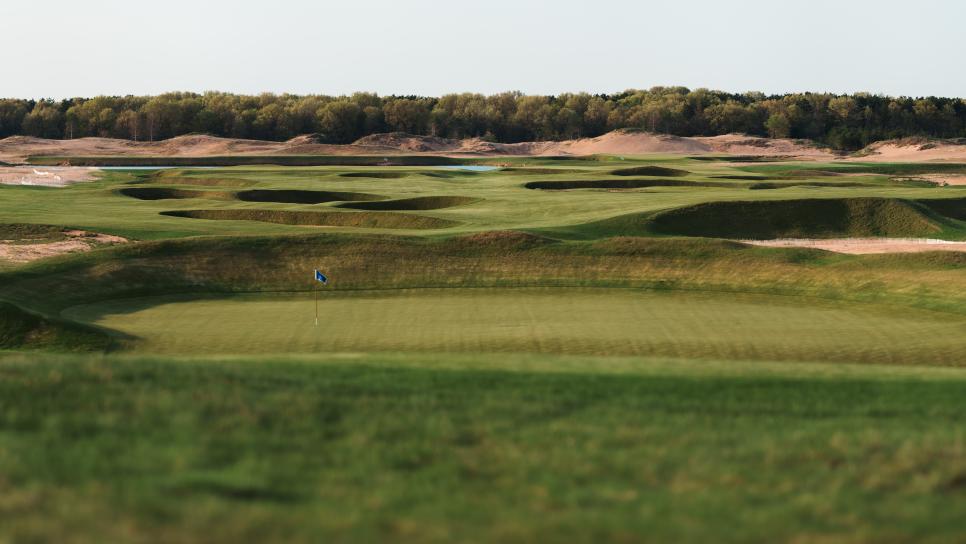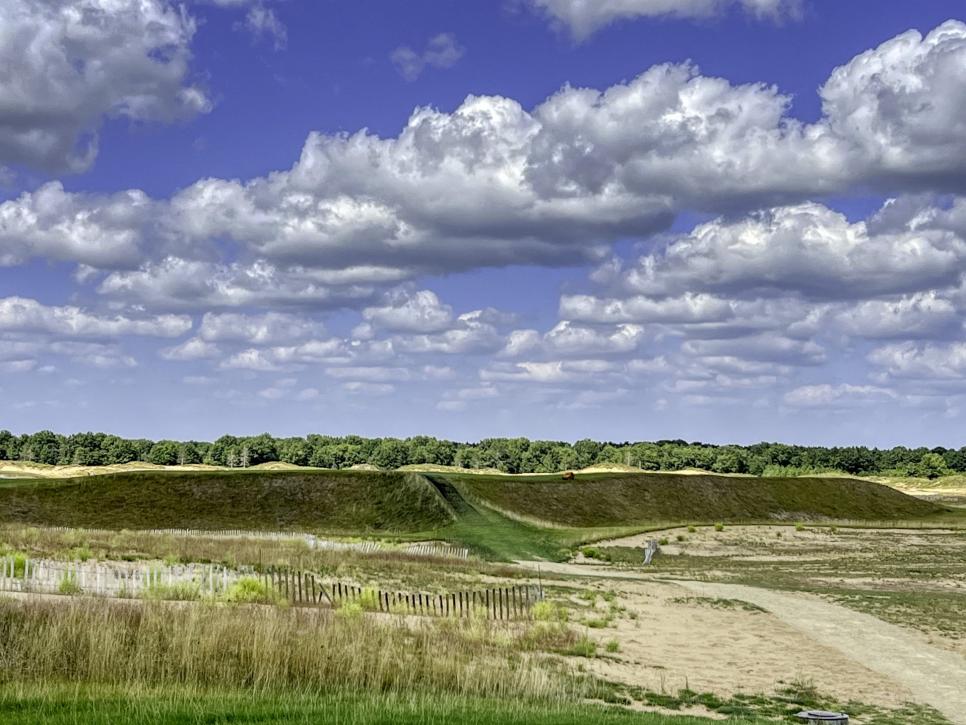The Lido at Sand Valley Resort, opened this June, has been one of the most anticipated and publicized new courses in recent years.
The reason is twofold. The first is because it’s an uncommonly bare, muscular and intensely shaped design that defies easy comparison. As depicted on social media, magazines and elsewhere, the Lido shows dramatic, almost alien shapes of grass that seem to materialize kinetically from sandy plains.
The second is because of its backstory: The Lido is a frame-by-frame recreation of the course that C.B. Macdonald built in 1917 on Long Island that went out of existence in the 1940s when the land was converted to a naval base.

The “Alps” green at 10 (foreground) and the par-4 11th “Lagoon” beyond.
Brandon Carter
Many observers considered the Lido one of the best in the country during its prime in the 1920s. Since its demise it’s been the object of infatuation for golf historians who have pored over photographs of its features like the wreckage of the Titanic and pondered how the course must have appeared to golfers of the era. Michael and Chris Keiser, the developers of Sand Valley, decided to do more than wonder: They brought together a diverse team to rebuild the original seaside design as closely as possible at their central Wisconsin resort using a combination of computer simulation, new mapping technology, GPS guided bulldozers and the architectural guidance of Tom Doak and his associates.
The results are as physically spectacular as any Lido historian could have dreamed and as disorienting as if being awakened suddenly on the shore of Long Island Sound during the final months of World War I, the strange formations pirouetting amid a nearly directionless field of golf.
The Lido, as reconstructed, instantly becomes one of the most unique and fascinating experiences in American golf. It’s also one of the most baffling. Understanding it requires study and familiarity, and grasping some of its basic precepts may be the key to unlocking its mysteries—and its pleasures.

The putting surface at the par-4 first is blind even from an ideal fairway posiition.
BLINDNESS
Never has a golf course been more misrepresented by modern photography than the Lido.
Drone shots present the Lido as ordered Tetris blocks of fairways and greens connected around gaps of open sand, each contour, slope, bunker and avenue rendered in vivid detail. Delineated humps and hollows, accentuated by low light and long shadows, appear to form an inviting gameboard of chutes and pathways. The opposite is true when playing the course. The scenery is vague and disorienting, the colors, landforms and presumed holes blurring together. A common refrain is, “What am I looking at?” Or, “Where am I supposed to go?”
The long view on golf’s new fascination with short courses
The Lido was built on roughly 200 acres of pine-covered sand hills that were cleared and flattened to make the neutral base upon which the holes are manufactured. There’s little elevation change across the course and when walking the contours that pop in photographs obscure the routes to the greens as well as where the ball has come to rest. Navigating the course, at least initially, can be a journey of faith, like playing through a fog.

A boulder to the right of the walking path at the second hole indicates the safe line for this blind tee shot.
A number of drives and approaches are blind, with large rocks set atop dunes to provide aiming points. This can make first-time players uncomfortable, but it’s a common element of the old links of the U.K. that were an indirect inspiration for Macdonald, who would have had no reservations about incorporating blind shots and subterfuge when he built the course. The lack of clear sightlines, distorted visibility and seeing where the ball lands is a point of distinction that makes the Lido the most British course in the United States.
This article was originally published on golfdigest.com
